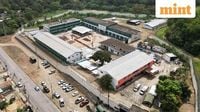On November 9, 2025, the Machala prison in Ecuador’s El Oro province became the latest flashpoint in a crisis that has gripped the nation’s penal system for years. According to the SNAI prisons agency, at least 31 inmates lost their lives during a day of violent rioting—one of the deadliest incidents in a string of prison unrest that has plagued Ecuador in recent years. Twenty-seven of those inmates died from asphyxiation and what authorities described as “immediate death by hanging,” while four others were killed in an armed confrontation earlier that day. The violence left at least 33 inmates and one police officer injured, with forensic teams working through the aftermath to clarify the details behind the tragedy, as reported by Reuters and other major outlets.
The unrest erupted around 3 a.m. local time (0800 GMT), with locals describing a harrowing night punctuated by gunfire, explosions, and desperate cries for help echoing from inside the prison walls. As the chaos unfolded, tactical police and elite units from the national police moved swiftly to regain control of the facility. According to SNAI, the initial outbreak was triggered by a reorganization of prisoners, as authorities prepared to transfer some inmates to a new maximum-security prison set to open in another province later in November. This planned move, intended to curb gang influence and restore order, instead sparked a deadly confrontation among inmates.
While the precise sequence of events remains under investigation, the SNAI statement offered a chilling account: “Among themselves committed asphyxiation, which caused immediate death by suspension.” Authorities have yet to release the identities of the victims or confirm the specific motivations behind the violence, but the incident underscores the deep-rooted problems within Ecuador’s prison system. According to France 24, Machala’s prison has become an operational hub for rival drug-trafficking gangs, with inmates vying for control of illegal trade networks that extend far beyond prison walls.
President Daniel Noboa’s administration has repeatedly blamed the ongoing violence on the relentless struggle between these rival gangs for dominance and territorial control. In a statement echoed in coverage by The Australian Associated Press, officials attribute the bloodshed to “rival gangs battling for dominance and territorial control,” a view supported by the frequency and brutality of recent clashes. The government’s tough-on-crime stance has so far struggled to stem the violence, as the country’s penitentiaries remain overcrowded, under-resourced, and riddled with corruption.
The Machala riot is not an isolated incident. In September 2025, the same facility witnessed another deadly outbreak, with 14 inmates killed and 14 others wounded in what authorities described as gang-related fighting. Just days later, 17 more people died in a riot at a prison in Esmeraldas, near Ecuador’s border with Colombia. These events are part of a broader pattern: since 2021, more than 500 inmates have been killed in Ecuadorian prisons, according to figures cited by AP and Reuters. Last year alone, a series of coordinated riots across multiple facilities led to the hostage-taking of 150 prison guards, highlighting the scale and severity of the crisis.
Experts and officials agree that the roots of Ecuador’s prison violence run deep. Overcrowding is rampant, with facilities often holding far more inmates than they were designed for. Corruption among staff and weak state control have allowed gangs, many with ties to powerful Colombian and Mexican drug cartels, to flourish behind bars. Inmates are frequently able to smuggle in weapons and orchestrate criminal activities with impunity, turning prisons into battlegrounds for organized crime. As BBC and France 24 have reported, these conditions have made Ecuador’s prisons among the most dangerous in Latin America.
The government’s response has been twofold: crack down on organized crime and overhaul the country’s prison infrastructure. The new maximum-security prison, which was at the center of the latest unrest, is part of a broader effort to separate high-risk inmates and reduce gang influence. But as the events at Machala show, such moves can have unintended—and deadly—consequences. The reorganization of prisoners, while intended to improve security, instead triggered a violent backlash among inmates fearful of losing their power or being transferred into hostile territory.
For families of inmates and ordinary Ecuadorians, the recurring violence is a source of deep anxiety and frustration. The sounds of gunfire and explosions emanating from prison walls have become all too familiar in cities like Machala and Esmeraldas. Local residents, quoted in multiple reports, described the terror of hearing “cries for help” and the uncertainty of not knowing whether loved ones inside were safe. The lack of transparency and slow pace of official investigations have only added to the sense of unease.
Political leaders from across the spectrum have weighed in on the crisis, each offering their own perspective on the causes and solutions. Some argue that the government’s hardline approach is necessary to restore order and protect the public, pointing to the influence of transnational crime syndicates and the need for decisive action. Others contend that the focus on repression and incarceration has failed to address the underlying issues of poverty, inequality, and lack of rehabilitation opportunities that drive young people into gangs in the first place. There is also criticism of the state’s inability to protect both inmates and staff, with calls for greater investment in prison infrastructure, staff training, and social programs aimed at breaking the cycle of violence.
International observers and human rights organizations have also raised alarms about the deteriorating conditions inside Ecuador’s prisons. Overcrowding, inadequate medical care, and the use of force by security personnel have all been cited as contributing factors to the ongoing crisis. The government, for its part, insists that reforms are underway and that new facilities, increased funding, and improved oversight will eventually bring the situation under control. Yet, as the Machala tragedy demonstrates, progress remains slow and the human cost continues to mount.
As investigators work to piece together the events of November 9, the families of the victims are left to mourn, and a nation once again confronts the grim reality of a prison system in turmoil. The Machala riot stands as a stark reminder of the urgent need for comprehensive reform—one that addresses not only the immediate security challenges but also the deeper social and economic forces fueling Ecuador’s cycle of prison violence.


